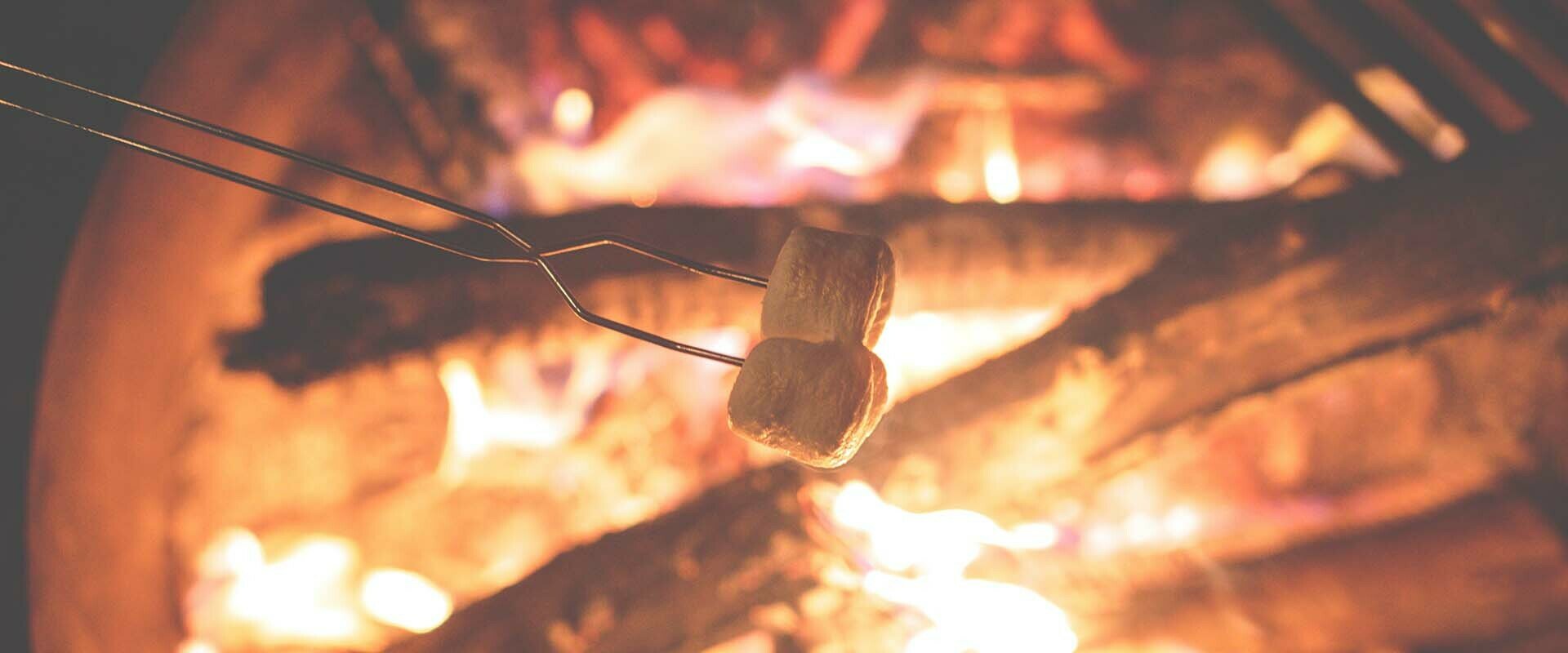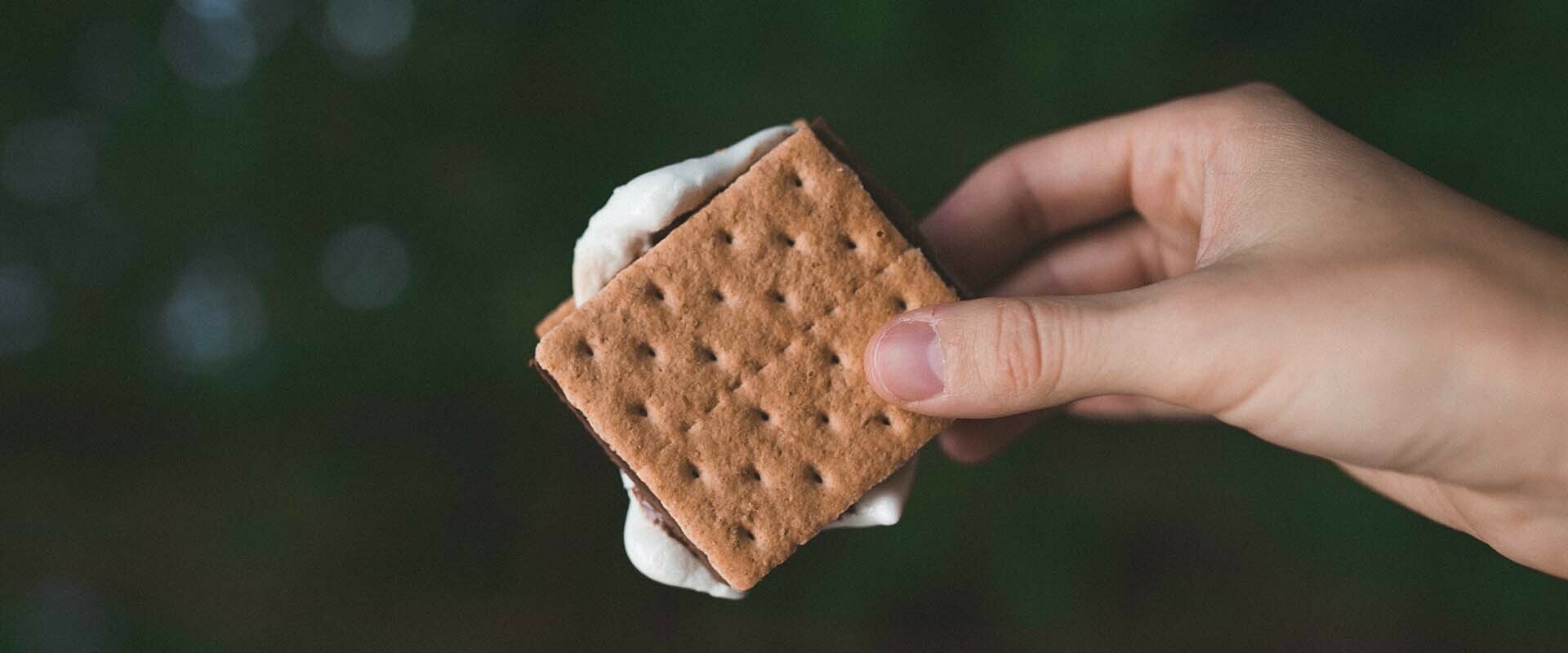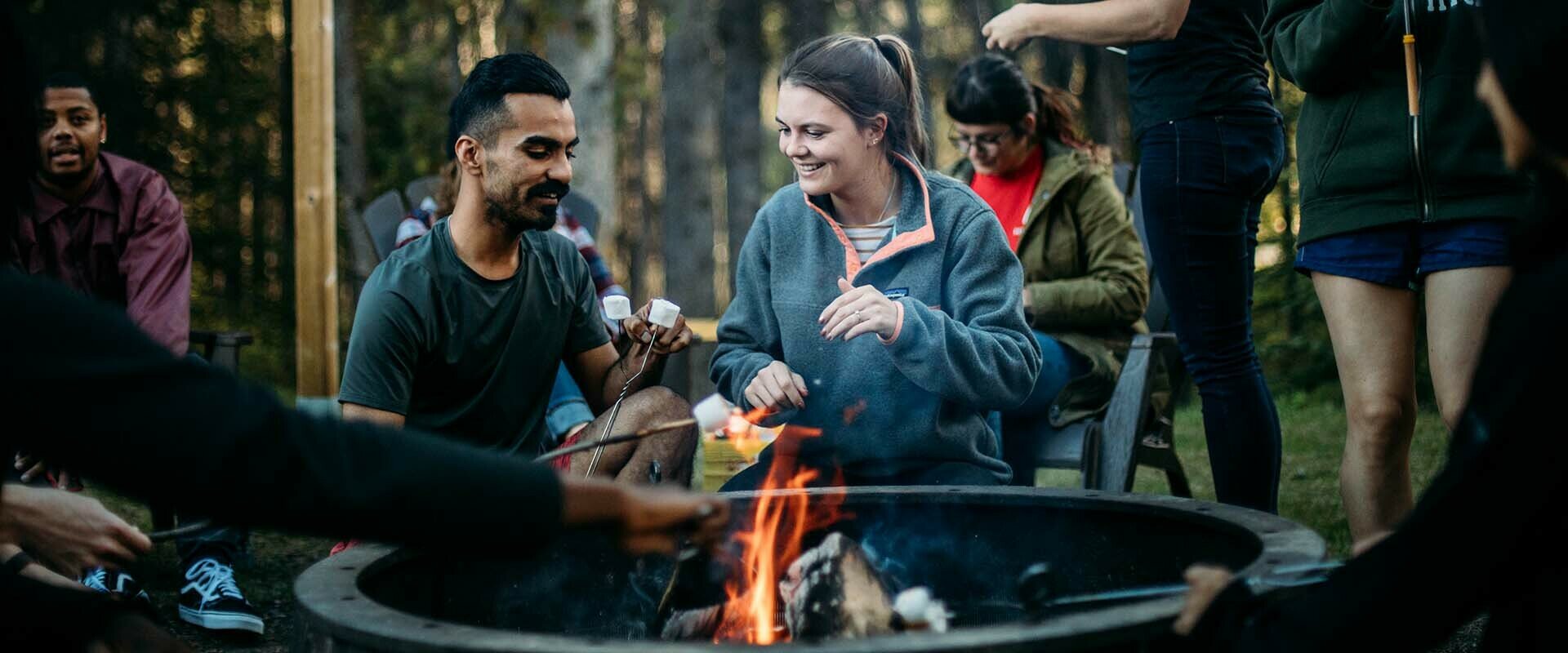A totally controversial guide to s'mores
S'mores at a bonfire is a little like hot sauce on pizza. Once you get a taste for the pairing, life just feels a bit bland without it. While the delicacy was born in the United States, it's an important part of Canadian outdoor cuisine, and our northern spin on it means it isn't relegated to one particular season. Winter bonfires are just as good as summer ones, and s'mores are the perfect dish any time of year, any time of day. But when you start to get into the details around what makes a s'more so good, you're bound to run into the gooey layers of controversy that surround this snack. If you have strong feelings about s'mores, read on. If you don't, well, buckle up and get ready to have some feelings.
Ingredients
A s’more purist myself, I personally don’t think there’s room in a s’more for anything but the staples: two graham crackers, a single regular marshmallow and a portion of a milk chocolate bar. If you’re a purist, too, I highly recommend you do not Google “s’more recipes.” You’ll find ghastly images of fruit and unmelted chocolate, talk of savoury elements, somebody mentions bacon—it’s hard to come back from that.
But don't let the simple ingredient list fool you—that's just the beginning. There's so much more that goes into a good s'more.
Construction & Cooking
These two steps have to be intertwined just due to the nature of each—construction may happen during the cooking process, and vice versa. Which comes first is a personal moral question you must wrestle with independently.
We can drill down to two main camps, so to speak: The Wrap and Bake or the Roast and Squish. Both depend on the right cooking apparatus: a campfire. That’s easy, right? Not so fast. Not any campfire will do. S’mores are a patience game. Start a bonfire, yes. But then sit and wait. Jumping the gun will only result in you staring down the two ends of the s’more spectrum: overcooked and undercooked. A proper s’more fire is one that has burned down to produce the perfect roasting oven—puddles of orange-hot coals, embers that glimmer like lava. Where we’re going we don’t need flames. We don’t want flames. A campfire flame causes a marshmallow flame and we’re here for two reasons: roasting and toasting.
Once you’ve got a roasty, toasty fire going, let’s get down to business.

Wrap and Bake
In this belief system, you layer your raw marshmallow and raw chocolate in between two raw graham crackers and then wrap the whole thing in tin foil. If you’re s’moring with an international group, be sure to leave time to discuss which syllable gets the emphasis in the word aluminum, which takes about as much time as you need to get a fresh campfire into s’more mode, conveniently enough. When the fire is suitable, you gently rest your Canadian burrito on or near hot coals and let the heat work its magic to melt the marshmallow and chocolate within the cozy confines of its aLUminum blanket.
The risk here is abundantly clear. How do you know everything is melted enough when you don’t have eyes on it? How do you know you’re not burning the graham crackers? You don’t. This is the eternal existential struggle within the wrap and bake school of s’morology.
Pulling a s’more out to check if it’s done runs the very real risk of landing you with either a) an insufficiently melted centre or b) totally burnt wafers. In the case of the former, you can always re-bundle it and put it back in for extra innings, but it’s kinda like opening the oven when you’re broiling a pizza—that escaped heat just messes with things, and it’s not the same as a one-shot roast. If you leave it in too long, well, you’re completely screwed. You have two options: throw the whole thing in the fire and watch the marshmallow’s demise, a sort of peace offering to the s’more gods you just wronged, or you lick the melted chocolate and marshmallow off the burnt crackers and then throw them into the fire, which honestly just pisses the s’more gods off even more. No one wins here. Yet some people thrive in this kind of chaos... for good reason.
Think about it. What happens if you nail the perfect bake time? You’ll know it the second you unwrap your s’more and hear a flock of loons call out in the distance. There’s a toastiness to the graham crackers that you can’t quite get any other way and an intoxicating sense of accomplishment that you will carry with you for the rest of your life. The intertwixedness of the chocolate and marshmallow raises this s’more format (s’mormat in academic circles) to expert levels rarely achieved outside of laboratory settings. With patience, practice and three to six years of annual summer camp, you’ll get there. Is it worth the hardship and burnt wafers along the way? Only you can decide that. But yes. It 100% is.

© Travel Alberta - AV Wakefield @picobac
Roast n’ Squish
Perhaps the more traditional s’more making method, this one involves roasting the marshmallow on a stick, away from the graham crackers and chocolate, until it reaches the desired degree of toastiness. And this is a subjective thing, which adds a certain freedom to the process that takes s’more-making from a science to an art. Some people insist the marshmallow should just be "warmed up" over the fire, and fortunately these people are never invited back. On the other hand, “some men just want to watch the world burn,” as Alfred Pennyworth puts it, only in this case the world is a marshmallow. These people will jab their shmallow right into the flames and set it alight, only finding satisfaction once the marshmallow is burned to a charred crisp. Give these people a wide berth. They’re unpredictable.
One other way of doing it, which we’ll call “the only right way,” is to slow-roast your marshmallow to a golden perfection, with an evenly caramelized crust on all sides. If you can pull the top golden layer off your marshmallow to reveal a smaller, baby marshmallow inside, you’re doing it right. True artists can reliably produce the Russian nesting doll of marshmallows, pulling off golden layer after golden layer until you’re left with nothing but a minuscule painted wooden doll at the end.
Once your marshmallow is roasted to your tastes, you slide it onto a chocolate-topped Graham cracker, sandwich it with another graham cracker (and possibly another piece of chocolate) and give the whole thing a real good squish. Time is of the essence here, as all of the heat of your freshly roasted marshmallow is needed to adequately melt the chocolate, otherwise why did you even make a fire in the first place.
Expert level roast ‘n squishers may add the extra step of placing chocolate pieces on their graham crackers prior to roasting the marshmallow and resting those close to but not in the roasty, toasty fire and allowing the heat to soften your chocolate and warm your wafers prior to the construction phase. This is a dangerous process that requires you to have eyes on your wafers and your marsh simultaneously to ensure the former isn’t stepped on or knocked into the fire and the latter isn’t inadvertently sacrificed ablaze.
But sure, at the end of the day, let’s say there’s no wrong way to s’more so long as you’re having fun and making friends. Sure. Fine. Get out there, have some fun and for the love of s'more gods, don't you dare screw it up.

Pro Tips to Take Your S’mores to the Next Level
- Invest in a marshmallow roasting stick with a rotating handle. This allows the precision rotisserie handiwork required to evenly roast a marshmallow. Go slow, savour each degree of the 360 you've been given.
- Only double-roast with a dual-pronged roaster if you’ve got the patience, stamina and funds to care for young twins. It’s a big responsibility.
- On the flipside, narrow-set double prongs that allow you to pierce a solitary marshmallow twice can add some extra stability for beginners or the moderately inebriated.
- If you choose to go the pre-warmed wafer and chocolate approach, build a separate designated warming station slightly away from your roasting oven but within the same fire pit, so you have dedicated spaces for the two parts of the cooking process. Go even further and collaborate with your fellow s’morers by assigning someone the role of warmer, and someone else the role of roaster. Stay in your lane.
- Stick your chocolate inside your marshmallow before roasting. This is expert-level stuff here, and while you can surely understand the appeal, adding weight like this to your mallow adds a very precarious potential imbalance. A weighted but softened marshmallow runs the serious risk of falling off your stick into the abyss. Plus, the amount of chocolate you can get inside a marshmallow likely doesn’t adhere to the Standard Laws of S’more Ratios and additional chocolate will be required. It's a responsibility, not a right.

HI Canada Staff Tips
Some of our HI Canada staff risked losing their jobs by sharing their favourite variations on s’mores:
- Use Nutella instead of pieces of chocolate bar – Ryan, HI Whistler
- Don’t use marshmallows at all—just chocolate and graham crackers – Maddy, HI Jasper
- Burn your marshmallow to a crisp – Shauna, HI Castle Mountain Wilderness Hostel
- Use Oreos instead of graham crackers – Grant, Regional Office
- Reese’s Peanut Butter Cups instead of plain chocolate – Shelbey, Regional Office
- Use pre-chocolated Celebration cookies instead of graham crackers and chocolate bar – Janice, HI Vancouver Jericho Beach
- Burn the marshmallow then remove the burnt layer and use only the gooey middle in your s'more – Arianne, Regional Office
- Roll your roasted marshmallow in Rice Krispies and place it between two chocolate chip cookies – Isabelle, Regional Office
- "Almost" burn your marshmallow and place it between two mini brownies – Kat, Regional Office



